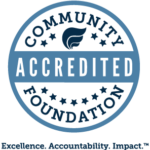Guide to Giving: When to Give
Dec 12, 2018
This is the third article in a Guide to Giving blog series by contributing editor
Richard B. Freeman. Richard is a Senior Director, Wealth Advisor at Round Table
Wealth Management and a member of FCCF’s Professional Advisors Council.
You have reached a point in your life where philanthropy is important to you. Financial success has been achieved and you now want to give back. You may not be sure, however, how much you can afford to give during your lifetime and/or through your estate. In your estate, what is the balance between giving to charity versus giving to family? Speaking of family, how do you get your children involved in charitable giving? And ultimately, when is the most appropriate time to give? The answer to this question is personal and depends on your goals and financial considerations.
For those that desire to give back, developing a well-designed plan can address these core issues raised above and help you establish a roadmap for giving.1 A financial planning forecast acts as the starting point for your strategic giving plan. This forecast balances your projected financial resources (investments, retirement plans, inheritance, sale of your business, etc.) against your spending and gifting goals to determine the probability of achieving them. From there you can refine the forecast to figure out how much more (or less) you can afford to give away during your lifetime and/or at death while remaining financially secure. This decision should also take into consideration how much you desire to leave to your family as opposed to charity.
Once you determine your capacity to gift, you can decide the appropriate timing and strategy to carry out your charitable intent. The information below explores different options for implementing your gifting strategy based on the timing of your gifts.
Lifetime Giving
The most immediate path to charitable giving (and receiving income tax benefits) is to give during your lifetime. Once you have completed the forecast exercise described above you can start the process of giving while you are alive to see the impact! You may wish to exercise more control as to the timing and conditions for your gifting. There are several ways to do so.
You may wish to spread your gifting out over time and let the charities know that. The charity will often ask you to sign either an enforceable gift pledge or a letter of intent.
Signing a Gift Pledge would indicate that:
- You trust the organization and are committed; note that this pledge would be collectible from your estate if not paid before your death.
- The charity can count your pledge as an asset on its balance sheet; this is very important during capital campaigns.
- You value the recognition that typically comes with commitments.
Note: If you do sign a pledge, you cannot use your donor advised fund (DAF) or private foundation to satisfy that pledge. The Internal Revenue Code2 prohibits donor advised funds and private foundations from providing a “more than incidental benefit” to donors. Using these funds to satisfy your pledge would be deemed as providing you with the benefit of relieving you of the liability created by your pledge. (Although this prohibition may change soon for DAFs.3)
On the other hand, not signing a pledge would indicate that:
- You want the right to change your mind about the charity.
- Your primary charitable funding vehicle is either a DAF or private foundation. As referenced above, you cannot use these vehicles to satisfy the pledge.
- You are concerned about suffering future financial losses which could make giving more challenging.
Another option is to establish a letter of intent. A Letter of Intent is similar to a pledge, but without the language that makes a pledge enforceable. Many letters include specific language similar to this: “Although I intend to make the gift described above, this document shall be construed only as a statement of my intent and should not be construed as my, my heirs’ or my estate’s legal obligation.” While a charity cannot count the gift as an asset, many campaigns count the intended gift toward campaign goals.
For substantial gifts, you may be interested in making sure your donative intent is adhered to by the charitable institution. A Gift Agreement can mitigate this concern by confirming the purpose of the gift, what rights the charity has to alter the purpose in the future, and how that would happen. Sample terms could include prohibiting the charity from unilaterally changing programs established with gift funds and/or specifying someone identified by the donor to assist in setting investment policies for the funds. The gift agreement would outline these and other types of instructions. It is the first step in establishing a Restricted Fund which carries out these instructions. At Fairfield County’s Community Foundation these are called Field of Interest Funds.
Estate Charitable Giving
Those who wish to defer all or a portion of their charitable giving during their lifetime may choose to fulfill their philanthropic desires through their estate. After you have used your financial planning forecast to determine your testamentary family and charitable gifting amounts (the latter reduces your taxable estate) you will need to make sure your wishes are implemented.
Depending upon how your estate is structured, you may want to make specific bequests of a set dollar amount, percentages or residuals of your estate to charity. You should work closely with your Financial Advisor and Trusts and Estates Attorney to make sure your estate documents, asset titling and beneficiary designations are all coordinated to achieve the desired results. You may also wish to check with the charity to make sure your specific intentions are clear from their perspective. If you have a DAF and/or private foundation, you should determine what happens to those funds when you pass away. Do you want them to be distributed to your charitable interests or to continue on with a successor you appoint? Also keep in mind that it is always a good idea to tell family members of your plans so that there are no surprises.
Note that pledges, letters of intent and gift agreements discussed above are also viable options that can be used with estate charitable giving.
Children and Charitable Giving
We have found that a DAF is a great way to get children started in charitable giving. A fund is set up in the name of the child, with the parents making the initial contribution (and getting the income tax deduction). Some parents use special occasions to do this including birthdays, graduations and weddings. The child determines the recipients of the charitable distributions. Note that if a child is not 18 years old, a legal guardian must represent them. This presents an opportunity for children to work with their parents in developing a charitable mindset and direction.
If you want your charitable giving to continue after your death, there are ways to allow future generations to carry on a charitable legacy. You can add to their DAFs via a bequest in your estate rather than (or in addition to) directing your estate to your own charitable interests. In addition, you can name your children as successor advisors to your own DAF, which will allow them to direct distributions after your death. If you have a Private Foundation, making sure your children are Board members and perhaps Officers will accomplish a similar legacy.
Whatever your charitable goals are, Fairfield County’s Community Foundation (FCCF) can help you determine the best way to reach them. Many options are available: https://fccfoundation.org/ways-to-give/. Please contact Mike Rosen, Chief Revenue & Business Development Officer at (203) 750-3200 or MRosen@fccfoundation.org for a personal conversation about your charitable goals.
Richard B. Freeman is a Senior Director, Wealth Advisor at Round Table Wealth Management. He is a member of FCCF’s Professional Advisor Council. Rich can be reached at (203) 658-6740 or rich@roundtablewealth.com.
Website: https://www.roundtablewealth.com/
LinkedIn: https://www.linkedin.com/in/richardbfreeman/
________________________________________________________________________________________
[1] Consult your tax advisor for the best options for your personal circumstances. Your tax advisor can help you with both the confirmation of the proper tax treatment of a contemplated strategy as well as whether you should use a charitable income tax deduction or a standard deduction; the Tax Cut and Jobs Act of 2017 has impacted this decision for many taxpayers.
[2] IRC Section 4967
[3] The IRS released Notice 2017-73 in December 2017 which proposes guidance that would allow use of grants from a DAF to satisfy a pledge if certain conditions were met. The conditions are:
1. The DAF distribution makes no reference to the existence of the pledge.
2. No Donor receives more than incidental benefits.
3. The Donor does not claim a charitable income tax deduction.
More on Richard B. Freeman
 Richard B. Freeman is a Senior Director, Wealth Advisor at Round Table Wealth Management. He is a member of FCCF’s Professional Advisor Council.
Richard B. Freeman is a Senior Director, Wealth Advisor at Round Table Wealth Management. He is a member of FCCF’s Professional Advisor Council.
Rich can be reached at (203) 658-6740 or rich@roundtablewealth.com.
Website: https://www.roundtablewealth.com/
LinkedIn: https://www.linkedin.com/in/richardbfreeman

